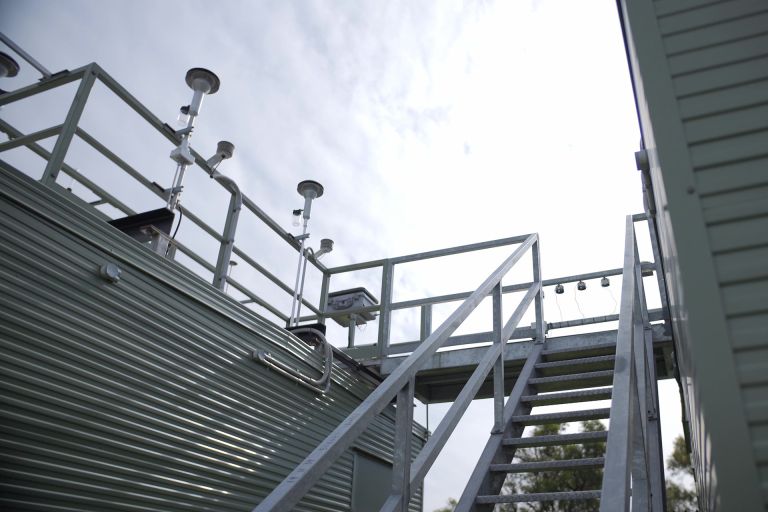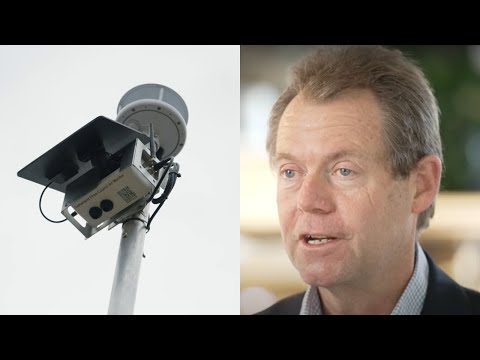Introduction
OPENAIR is an initiative led by the NSW Department of Planning and Environment and the NSW Smart Sensing Network. The aim of this initiative is to provide local governments with the latest technology and information on inexpensive air quality sensors. For the first time in Australia, this group will establish a best-practice methodology for all aspects of council-led air quality monitoring.
This will result in creating healthier communities throughout NSW.
Multi-award recognised project:
- Banksia Foundation National Sustainability Awards 2024: Healthy Planet, Healthy People
- 2024 IoT Awards: Research
- 2024 IoT Awards: Environmental Monitoring (Finalist)

The Operational Network of Air Quality Impact Resources (OPENAIR) project documentary
Challenge
Summer heat waves, urban heat islands and air pollution are increasingly common challenges for both local governments and state government agencies.
Local environmental data is needed to address problems impacting how we live in our cities and regional centres.
Understanding what’s happening before and during air pollution and heatwave events can help us build systems that warn us. It also helps us develop policies and interventions to protect the vulnerable.
Our world is changing. People are getting older. We are using our land differently. The weather is getting warmer. The air might not be as clean. We need to be aware of these problems as they arise. If we do, people who make plans for our cities can help us be ready for these issues. They can make sure our cities are strong and safe for the future.
Of the 128 local governments in NSW, only a small number can effectively plan for, deploy and use environmental sensors to address air quality issues.
Solution
Low-cost environmental sensors for checking air quality let us gather information on air pollution in cities. We can then share this data with people at the local level and with researchers and within government.
This program will create a blueprint for local government, incorporating best practice standards, policy and globally significant case studies.
The approach will be piloted in a range of metropolitan, urban and regional local government areas addressing real, locally relevant environmental issues in each local government area.
Expected outcomes
Smart Places outcome areas:
- environmental quality
- health and wellbeing.
The project is also:
- supporting healthier communities throughout NSW
- increasing capacity across local councils in the use of environmental sensors.
Multimedia assets
Resources
Want to implement a similar project? Visit our Smart Places Playbook for help.
Smart Places Playbook: Foundations
Having the right policies and skills in place to support your smart places journey.
Smart Places Playbook: Discover
Starting with a focus on the place and its people, the opportunities and problems to solve.
Smart Places Playbook: Design
Exploring the market, identifying potential solutions and setting out plans for delivery.
Contact details
Media coverage
- Media Release: NSSN - NSW councils join leading researchers to deploy localised air quality sensors, 22 Jun 22
- UTS Institute for Sustainable Futures, OPENAIR: SMART solutions for air quality testing
- IoTHUB, NSW Government, councils, universities launch sensor project to address air quality, 22 June 22
- Hunter Valley News, Muswellbrook Council joins leading university-led program to deploy localised air quality sensors, 28 June 22
Explore other smart projects in NSW
Image

Smart and Cool Places in NSW
Saving lives by creating cooler cities and towns in NSW and protecting residents from heatwaves. A NSW-specific pilot, to establish a National Heat Vulnerability Observatory (NaHVO).
Image

Smarter, Cleaner Sydney Harbour
Using artificial intelligence (AI) to tackle rubbish in local waters and improve the health of our waterways, for everyone to enjoy.
Image

AssetAI®
NSW Government is using artificial intelligence to revolutionise road maintenance and operations. This program will make it easier to keep roads safe for our communities.
See all our case studies
Search our entire database of Smart Places case studies.

